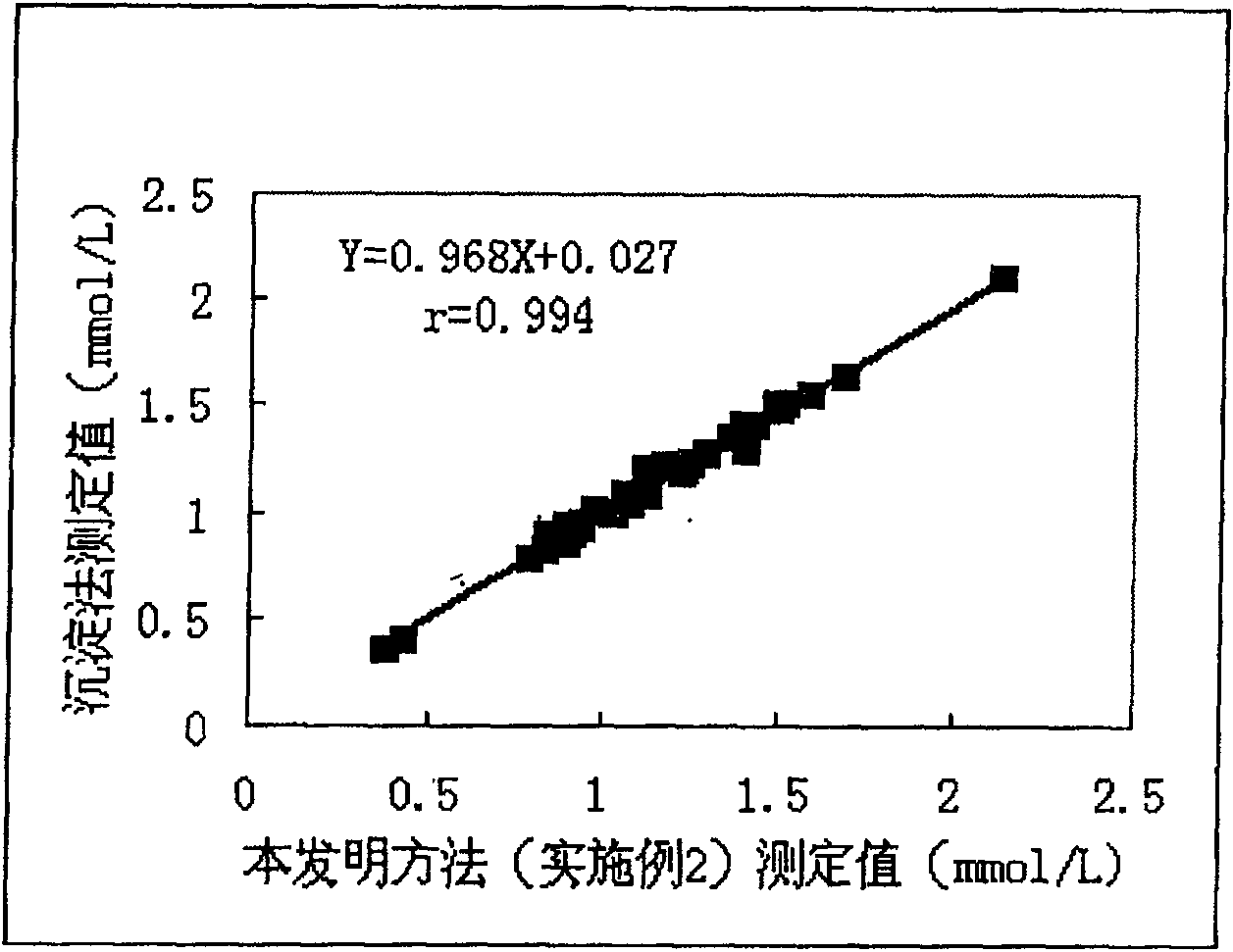Determination reagent for cholesterol in high density lipoprotein and preparing method thereof
A high-density lipoprotein and cholesterol technology, applied in the fields of medicine and biochemistry, can solve the problem that the specificity is not necessarily good, and achieve the effects of good specificity, lower detection costs, and reduced detection workload.
- Summary
- Abstract
- Description
- Claims
- Application Information
AI Technical Summary
Problems solved by technology
Method used
Image
Examples
preparation example Construction
[0042] Two, the preparation of high-affinity cholesterolase compound:
[0043] 1. Activate one or more mixtures of the above compounds in aqueous medium
[0044]One or more mixtures of the above-mentioned compounds are activated in an aqueous medium by the known azide method, carbodiimide method, succinimide method or periodate oxidation method, and the selected method is preferably able to Maximum maintenance of the activity of the prepared enzyme compound. The activation conditions are: the molar ratio of the compound to the activator is 1:1-1:10, the concentration of the compound is 1-50 mg / ml, the temperature is 0-25°C, the pH is in the range of 4-11, and the time is 0.1-24 hours . As we all know, the activators are azide, p-cyclohexyl-2-(4-morpholine) in the azide method, carbodiimide method, succinimide method or periodate oxidation method, respectively. ) ethyl-carbodiimide-methyl-p-toluenesulfonate, N-hydroxysuccinimide and sodium periodate. Some of the compounds d...
Embodiment 1
[0060] Example 1: The high-affinity enzyme cholesterol esterase compound and the high-affinity enzyme cholesterol oxidase compound in this example are prepared from the agave steroid glycoside and enzyme in the steroid glycoside compound; the configuration method is as described above, in:
[0061] The activation conditions for compound activation are:
[0062] The molar ratio of the compound to the activator is 1:1, the temperature is 15° C., the pH value is 8, and the time is 10 hours.
[0063] The molar ratio of the buffer solution is 100mmol / L, and the pH value of the buffer solution is 7.
[0064] The activated compound was mixed with the dissolved enzyme, and the solution was reacted at a temperature of 15° C. for 20 hours.
[0065] The agave glycoside is pre-dissolved in the following organic solvent mixture: a mixture of formyl dimethylamine and toluene at a ratio of 2:1, and the weight ratio of the compound to the organic solvent mixture is 1:0.01.
[0066] Reagent...
Embodiment 2
[0088] In this embodiment, cholesterol esterase compound and cholesterol oxidase compound are used to prepare from tea saponin and enzyme in triterpene glycoside compounds; the configuration method is as described above, wherein:
[0089] The activation conditions for compound activation are:
[0090] The molar ratio of the compound to the activator is 1:5, the temperature is 0° C., the pH value is 4, and the time is 24 hours.
[0091] The molar ratio of the buffer solution is 50mmol / L, and the pH value of the buffer solution is 9.
[0092] The activated compound is mixed with the dissolved enzyme, and the solution is reacted at 0°C for 24 hours;
[0093] The tea saponin is predissolved in the following organic solvent mixture: a mixture of formyl dimethylamine and ethanol at a ratio of 2:1; the weight ratio of the compound to the organic solvent mixture is 1:15.
[0094] Reagent I
[0095] The dosage of cholesterol esterase compound is 5000U / L
[0096] The dosage of chole...
PUM
 Login to View More
Login to View More Abstract
Description
Claims
Application Information
 Login to View More
Login to View More - R&D
- Intellectual Property
- Life Sciences
- Materials
- Tech Scout
- Unparalleled Data Quality
- Higher Quality Content
- 60% Fewer Hallucinations
Browse by: Latest US Patents, China's latest patents, Technical Efficacy Thesaurus, Application Domain, Technology Topic, Popular Technical Reports.
© 2025 PatSnap. All rights reserved.Legal|Privacy policy|Modern Slavery Act Transparency Statement|Sitemap|About US| Contact US: help@patsnap.com



